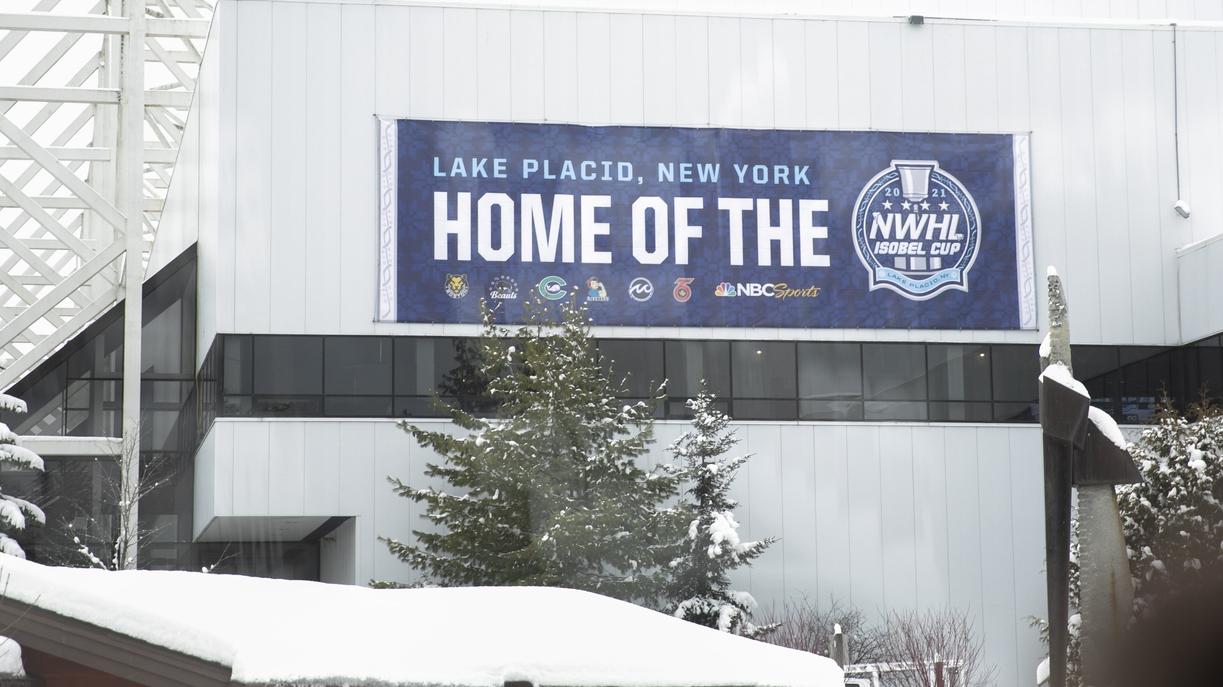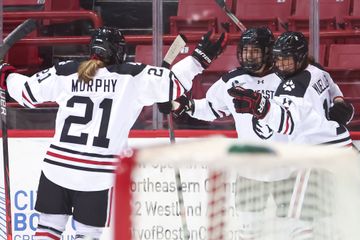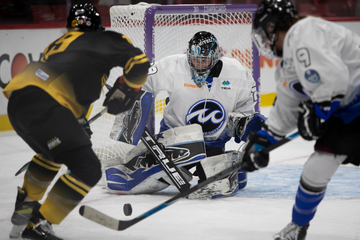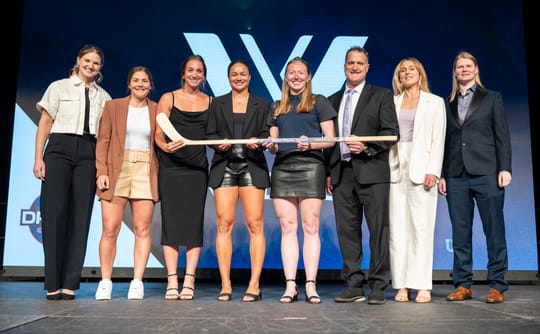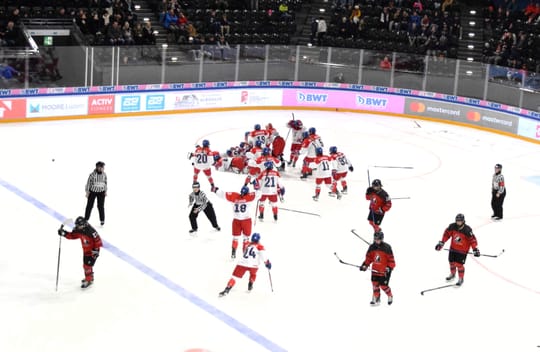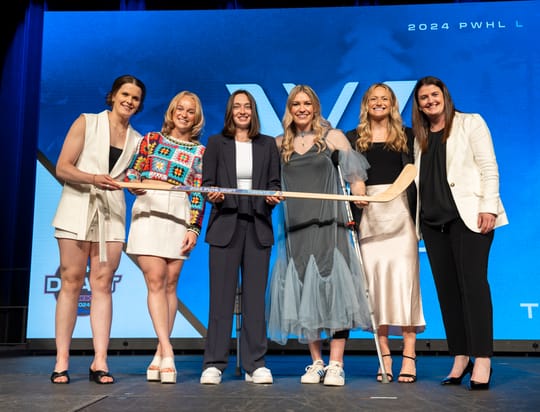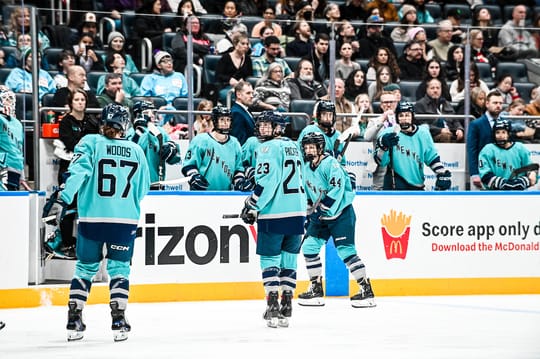Sports organizations have continued to announce schedules and hype their upcoming games and seasons on social media as if these are normal times – but of course they aren't, and every organized sporting event is burdened now by very serious public health questions as they attempt to run a safe operation during the COVID-19 pandemic.
The rate of new COVID cases is currently falling (slowly but steadily) in the United States right now, though the daily count of reported deaths remains in the thousands, sometimes 4,000 per day or more. New reported cases spiked after the first week of January, seeming to indicate that those people had become infected with the virus around Christmastime, 2 weeks prior. (Check out the COVID dashboards at the New York Times and the CDC to look at the data.) Logically, we know that activities like traveling, eating and drinking around others outside of our household, and gathering indoors are dangerous because of COVID-19. And we know that because of the virus's incubation period, it can take 2 weeks before symptoms present after a person has been infected. As we learn more about the novel coronavirus from a scientific perspective, doctors and public health experts have been revising their guidance. We're less worried about transmission from surfaces now, for example, than we were last March. But the base guidance has remained the same. Wear a mask. Wash your hands. Stay six feet apart from people outside your household. Avoid crowds and close indoor quarters. The virus is airborne.
But regular people, too, are analyzing their risks. In the United States, we have been left rudderless by the outgoing Trump administration. Many businesses remain open and people have had to go to work despite any infection risks in order to financially support themselves. Rules about whether a business can be open, whether a business can accommodate large groups of people indoors, and whether indoor dining is allowed have been left up to state and local municipalities, causing a huge degree of inconsistency throughout the country. To that end, everyone's experience with the virus has been different, depending on state and local regulations, and their individual circumstances and choices. It has been a truly mind-bending experience to be expected to go to work, for example, to risk infection, but to forego other activities, or to pass off the infection risk to someone else, such as the person who delivers our mail or packs and delivers our groceries.
But it's in this environment that we have seen a determined return to sports in the United States as well, and the success of that is just as inconsistent as you would imagine.
But again, we know the virus a little better now; we have access to rapid testing; some of us will be able to get vaccinated soon. We can make educated, good-faith efforts to minimize risk while we go about our activities – but the risk is still there and ever-present. When it comes to running an organized sports competition, these efforts are a heavy lift. They require buy-in and vigilance from participants at every level – players, coaches, support staff, league administration, facility operators, and, by extension, these individuals' families and friends. All it takes is one asymptomatic person spreading the virus to undo all of that effort, and it is very, very easy to spread the virus.
Hockey, a winter sport, usually kicks off its training camps and pre-season activities at all levels around the time that kids are going back to school. This year, a lot of that got pushed back to December or January, but anyone paying attention to COVID trends and vaccine news in September or October could have told you that this thing wasn't going to be under control by the new year – that in fact, it could be worse than ever before.
On the men's side, both the IIHF World Juniors (which ran between December 25 and January 5 in Edmonton) and the National Hockey League have experienced issues with players testing positive for COVID-19. The NHL in particular has had issues with its COVID protocol and getting players to follow the guidelines. Just this week, the Washington Capitals were fined $100,000 due to players failing to adhere to COVID protocols and socializing in their hotel rooms. Captain Alex Ovechkin was one of the players involved in the incident and was ruled out of games due to his exposure to teammate Ilya Samsonov who tested positive on Thursday, January 21. Ovechkin's wife, Anastasia Shubskaya, pointed out the absurdity of the NHL's COVID protocols in an Instagram story post (though she also erroneously implied that because Ovechkin and teammate Dmitry Orlov have COVID-19 antibodies, they can't spread the virus to others if exposed again – while rare, re-infection is possible, and a re-infected person can spread the virus).
Alex Ovechkin’s wife, Nastya, posted this on Instagram just now. She says Ovechkin and Dmitry Orlov have covid-19 antibodies. pic.twitter.com/ZzxaisAFvW
— Samantha Pell (@SamanthaJPell) January 21, 2021
Of course it doesn't make sense from a public health perspective to play sports right now. But the approach has been to create as normal an environment as possible while mitigating risk factors. This isn't what makes sense from a public health standpoint and isn't intended to be, apparently. It is, in essence, exactly what you would expect to happen if a bunch of people felt very strongly about playing sports despite the obvious risks and there wasn't a regulation or law telling them not to do so.
Public health regulatory bodies at the state and local level in the United States have made explicit exceptions for high-level athletes to continue to play despite the fact that COVID is a continuing danger, not just to athletes themselves but to support staff and their families. The Capitals incident highlights how some COVID protocol is largely performative. However, arguably, the rules still have a potential benefit at least in terms of encouraging social distancing behavior in day-to-day activities and minimizing the amount of contacts a person has – both in the event that they become infected, or in the event that they were potentially near an infected person.
It's hard, ultimately, because getting infected with COVID doesn't light up a bright pink neon sign on your face, or cause you to start gushing blood. There's no outward sign that you have been infected, and the delay of up to two weeks between contact with an infected person and symptom onset really makes COVID protocol difficult to develop, follow, and understand. Everything is fine, until it isn't. It's a lot of work and a heavy lift for sports leagues to pull off because they can't know if they've been successful until, potentially, weeks after the protocol failed. The immediate benefit is incomprehensible. It's a herculean effort for a negative reward – the reward of not having COVID.
Women's sports have had some better luck than men's sports with getting their players to follow COVID protocol and have seasons that, while not risk-free, have largely been considered successful. Last summer's NWSL Challenge Cup tournament in Utah, for example, and the WNBA season which ran between July and October in Florida, had no positive cases or documented exposures. It's easier to mitigate infection risk by holding games in what is popularly called a "bubble" environment. [1] This means no traveling – all activities take place at one concentrated site.
This was the strategy that both the Professional Women's Hockey Players' Association and the National Women's Hockey League adopted when they planned returns to the ice this January. The PWHPA played some tournament games against USPHL teams in Tampa Bay, Florida, between January 4 and 18, and the NWHL season is set to begin today, January 23, at a concentrated site in Lake Placid, New York.
The USPHL is a pre-college league, so the protocols were stricter for those younger players at "Hub City Tampa." When at Saddlebrook Resort in Tampa, according to a PWHPA representative, USPHL players "[were] not permitted to leave the resort site for any reason other than games/practices." PWHPA players could choose to rent cars or to travel via vans provided by the Association when attending games and practices. They were permitted to leave the resort for essential services only and were not permitted to mix with USPHL players at the resort site. A PWHPA representative told the Victory Press that any player found not following protocol would have been asked to leave.
All players were required to provide a negative test result before coming to Tampa and were encouraged to self-isolate before traveling to the tournament. Upon arrival in Tampa, all players were tested and were required to isolate until the result came back negative. The PWHPA had access to dedicated medical staff who conducted daily wellness checks and ensured that players were not experiencing any symptoms. After the initial testing, "mass testing" was conducted every few days, and results were available within 24 hours.
Most players had their groceries delivered in order to cook their own meals, though they were also allowed to go to the grocery store if they wished. There were restaurants onsite at Saddlebrook Resort that they could order from, and an approved list of restaurants that could deliver takeout food to the resort site. Players were only allowed at the arena 70 minutes prior to their warmup time, and were required to leave the game site immediately after their own game. There was no food or drink actually being consumed onsite during the games.
Players lived in suite rooms that held between 2 and 4 players at the resort and were expected to wear masks at all times except when eating, being in their private suite, and being on the ice. They were not permitted to interact with any other teams or individuals at the resort and were in a "pod" of suites next to each other. The USPHL teams were in their own "pod", and the USPHL had separate suites booked that would serve as isolation spaces in the event of a positive test where someone would have to completely isolate. A positive COVID test would have halted all on-ice activity and games would have been cancelled until negative COVID tests were returned.
The NWHL season kicking off in Lake Placid today follows a similar model. Before arrival in Lake Placid, the league strongly recommended that players isolate from non-household members to the fullest extent possible and stay home as much as possible to minimize exposure risk. Players were not permitted to travel by air for 14 days prior to the tournament, with the exception of the Minnesota Whitecaps' flight to the play site. Every player was required to show a negative test, dated within 72 hours, and indicate that they were experiencing no symptoms prior to arriving in Lake Placid.
The NWHL's COVID protocol was developed in conjunction with Olympic Regional Development Authority and local health authorities in Lake Placid, and, as previously announced, all players and staff are tested regularly using the Yale SalivaDirect test and rapid result nasal swab testing. During the entire 2-week season, food and drinks are provided to players in individual to-go bags and there are are no in-person team meals, no shared food, and no food or drink allowed in locker rooms. All NWHL personnel in Lake Placid have their own private rooms, and everyone is required to wear a mask at all times except when on the ice.
In the event of a positive test, the person who has tested positive will be isolated in their living quarters and kept away from all facilities and team activities. They will be isolated for 14 days or until 2 negative test results are returned, whichever comes first, and contact tracing will be conducted.
Every player who has signed with the NWHL for this shortened 2021 season will receive full compensation – even if they opt out of the tournament, and even if any part of the season has to be cancelled or postponed.
Both of these COVID protocols demonstrate a good-faith effort to keep players safe while allowing them to experience high level competition in a limited time frame. It is still important for all of us to remember, however, that mitigating risk doesn't mean eliminating it. Wear a mask that covers your mouth and nose, wash your hands, and practice social distancing. And if and when you can, get vaccinated!
The NWHL season begins today with the first game ever for the league's newest team, the Toronto Six, who face off against the Metropolitan Riveters at 1:00 PM Eastern. All regular season games will stream on the NWHL's Twitch channel.
For a more detailed look at the schedule and rosters for each team, check out Melissa Burgess' NWHL previews: Part I, Part II
[1] Editor's note: At the Victory Press, we are referring to these events as concentrated sites rather than bubbles, because we feel that the term "bubble" implies that all participants are definitively negative for COVID before interacting with others. Unless there is an enforced quarantine period with regular testing prior to events at the play site, we do not feel comfortable referring to these concentrated play sites as "bubbles" due to the fact that, while mitigated, there is still a not-insignificant COVID-19 exposure risk because it can take up to 14 days after exposure for someone to demonstrate a positive test.
As a contrast: for their 2020 season, the WNBA had a mandatory quarantine for players at home before traveling to their play site, required 3 negative test results before traveling, and then a 4-day enforced quarantine upon arrival. The league conducted daily testing for 2 weeks at the play site after arrival, and intermittent testing after that. Games did not start until 18 days after players arrived at the play site in Bradenton, Florida. With this length of time involved and players remaining at the play site in relative isolation with access to daily testing before play began, it seems fair to refer to the WNBA's site as a bubble. The WNBA had two positive tests during their initial 4-day quarantine in July 2020. Those two players isolated for 2 weeks off-site and demonstrated negative tests before returning to the play site. Reportedly, every other test conducted during the 2020 WNBA season was negative.
Kirsten Whelan contributed reporting to this article.
(Photo: NWHL)
